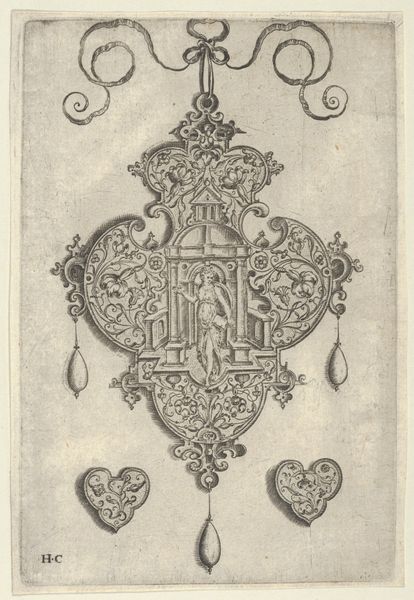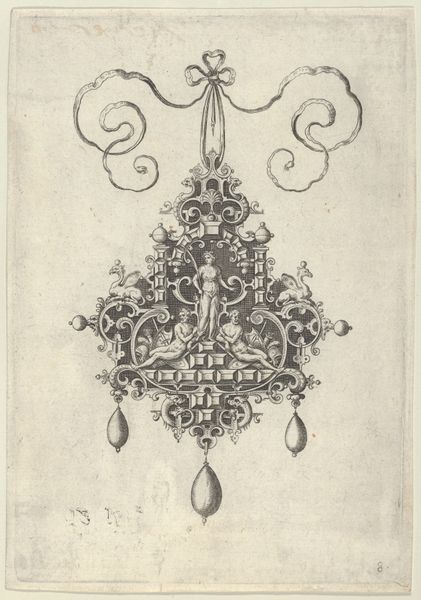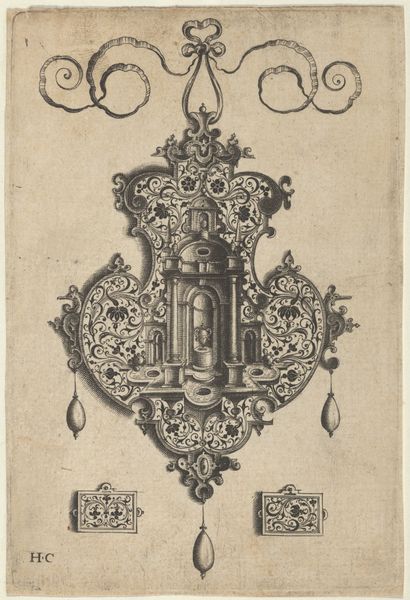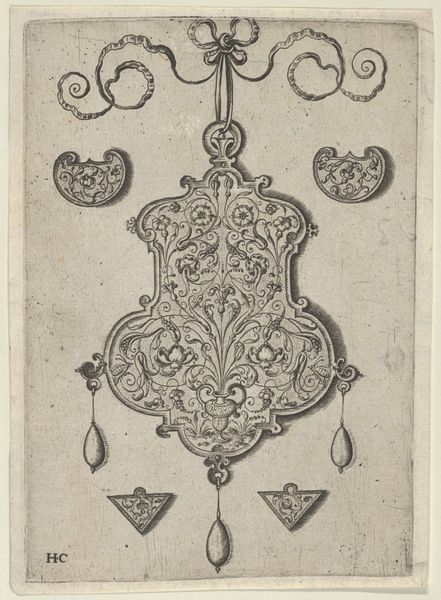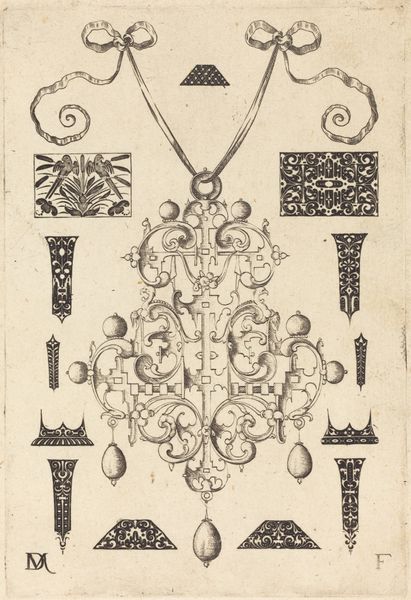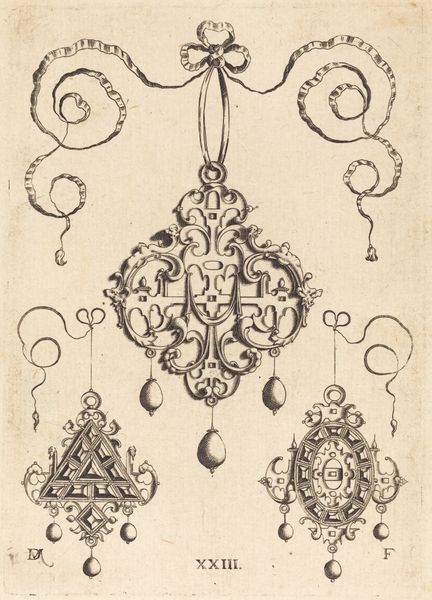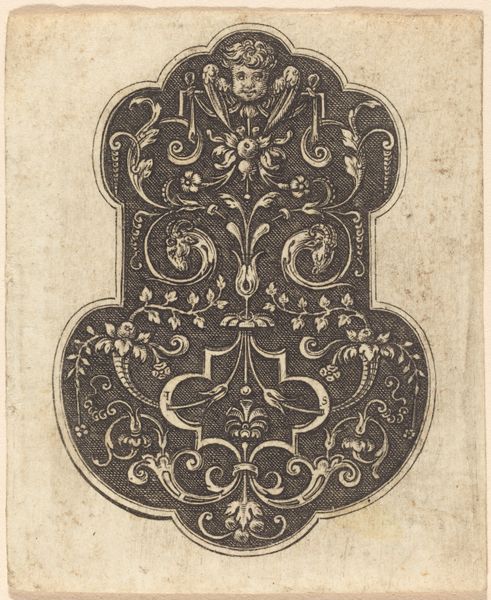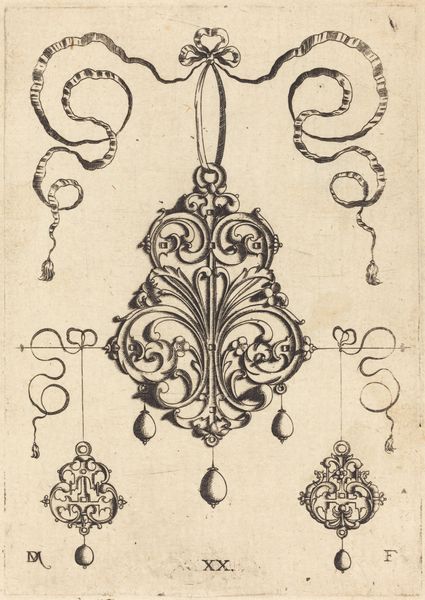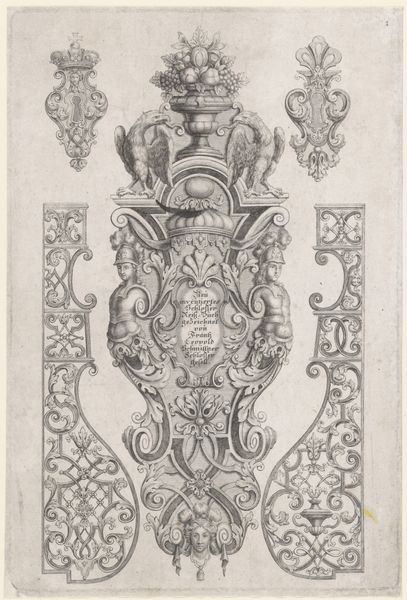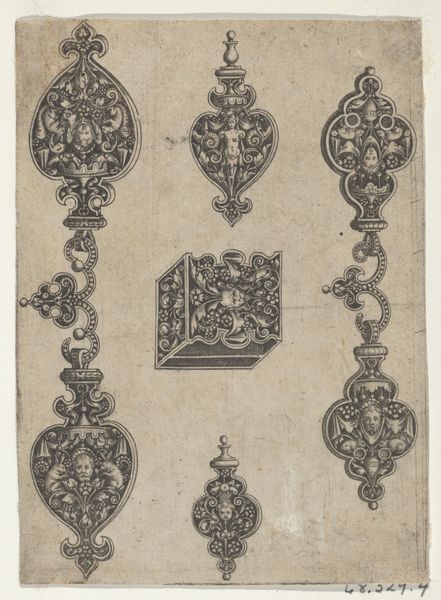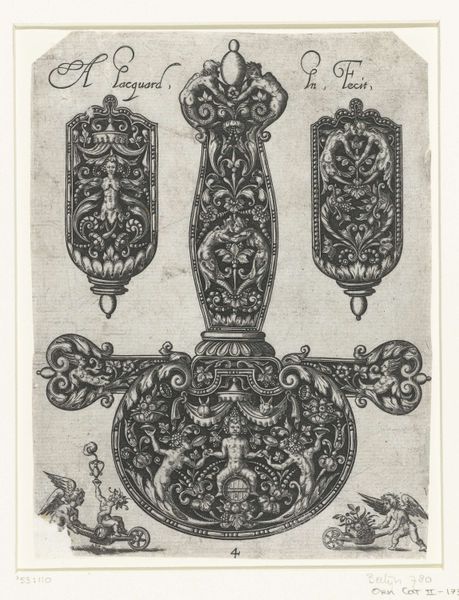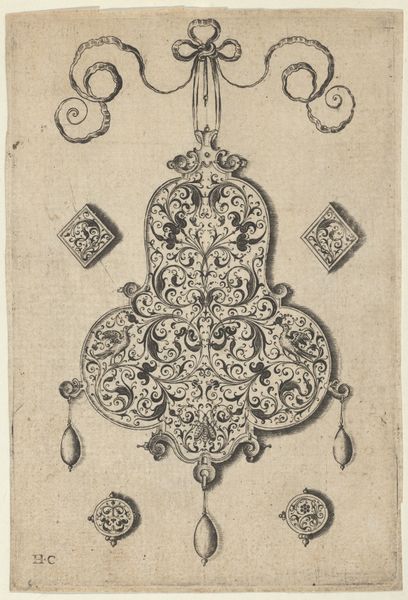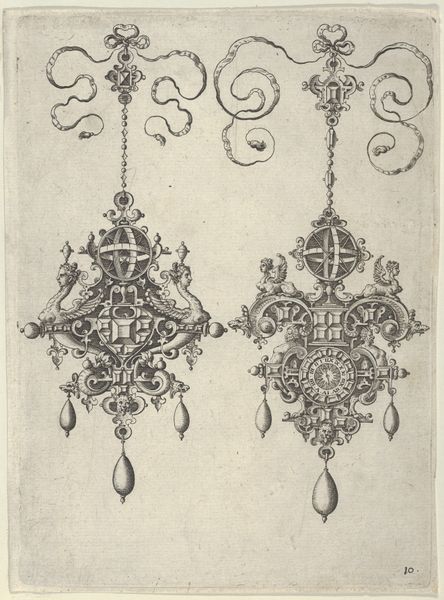
Pendant Design with Niche and a Vase with Two Handles Above Rectangular Ornaments 1604
0:00
0:00
drawing, print, pen, engraving
#
drawing
#
baroque
#
pen drawing
# print
#
pen sketch
#
vase
#
form
#
line
#
pen
#
decorative-art
#
engraving
#
miniature
Dimensions: Sheet: 6 7/16 × 4 13/16 in. (16.3 × 12.2 cm)
Copyright: Public Domain
Curator: This is a print titled "Pendant Design with Niche and a Vase with Two Handles Above Rectangular Ornaments," created around 1604 by Jan Collaert I. It resides here at the Metropolitan Museum of Art. Editor: Intricate! The whole composition, all the meticulous lines, evokes an elaborate, almost overwhelming sense of baroque opulence in monochrome. Curator: The Baroque style is definitely present; observe the density of ornament and the rhythmic complexity. The function here is tied to disseminating designs to workshops—patterns readily adaptable for jewelers, goldsmiths, or other artisans. Editor: Looking closely, I'm drawn to the architectural structure at the center. Note the precise lines that delineate the niche, and how that detailed space both contains and elevates the tiny vase. What do you make of its position and form? Curator: As a tool, this print facilitates a chain of production, from Collaert's conceptualization to the artisan's rendering in precious materials. I think the subject--that vase, that little structure--reflects contemporary patronage; demonstrating access to beautiful things but, crucially, the wealth that can then facilitate beautiful craftsmanship and making itself. Editor: That's interesting. Focusing on those contrasting plain and decorative panels below, it feels the balance of the pendant would change if these were adapted to different materials and scales. Even with this detailed form, is there some sort of flexibility? Curator: Absolutely. Artisans might reinterpret these details based on available materials or client preferences. These weren’t prescriptive, more suggestive designs to stimulate the trade of luxury items in Northern Europe at the time. This would dictate production processes, the availability of specialist labor, the global market, and material cost, as all influenced what might be the final piece, should it come to life. Editor: Fascinating. To think this incredibly precise drawing wasn’t meant to exist on its own, but to launch the production of *another* artwork, it is almost recursive! Curator: Exactly! So what at first glance might seem an abstract or highly rarefied image becomes grounded when we begin to situate its economic use, where it shifts within a very specific visual material world. Editor: That layering is unexpected, almost hidden beneath the drawing's ornamental flourish. I’ll never see pendants the same way!
Comments
No comments
Be the first to comment and join the conversation on the ultimate creative platform.
